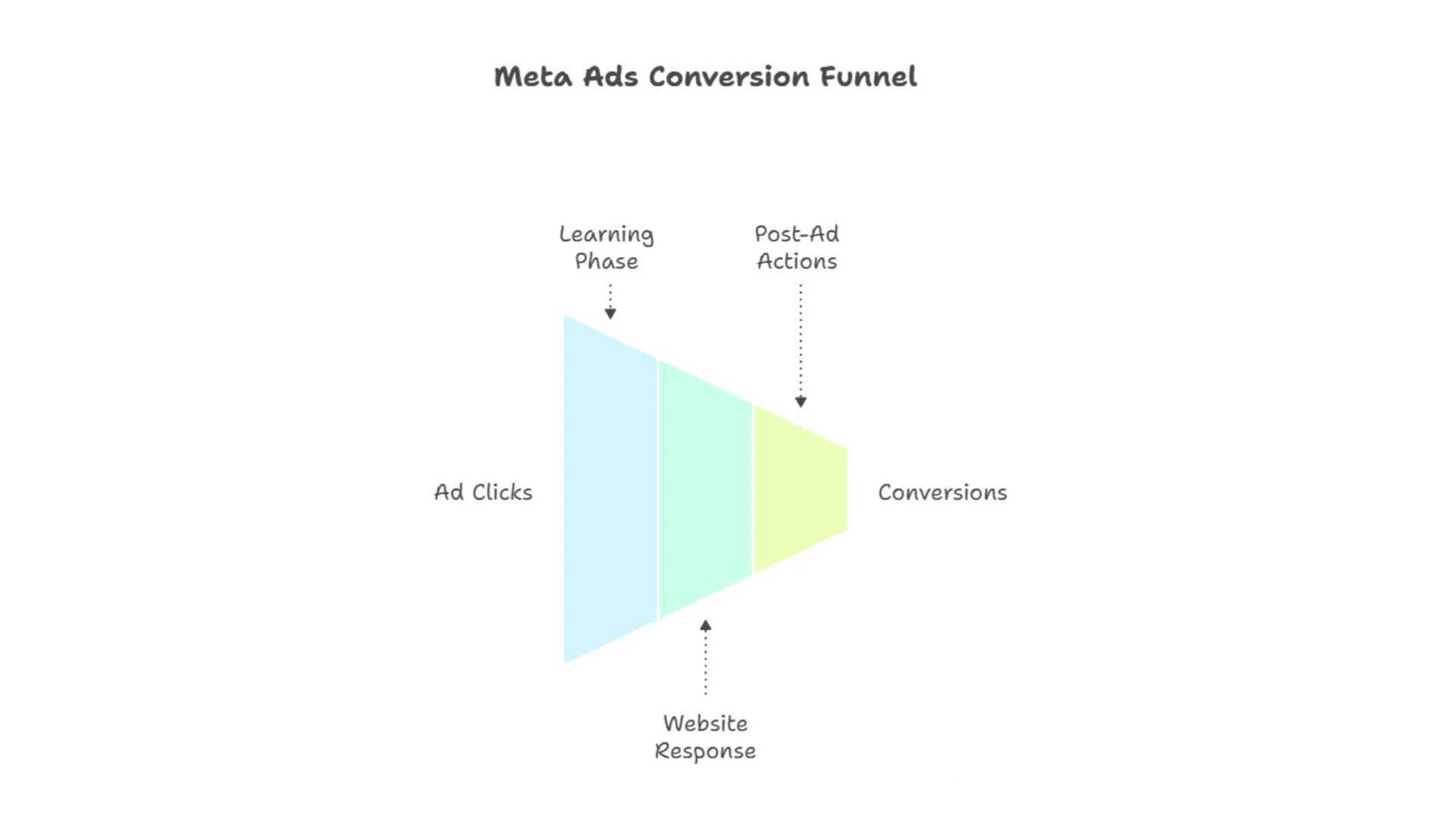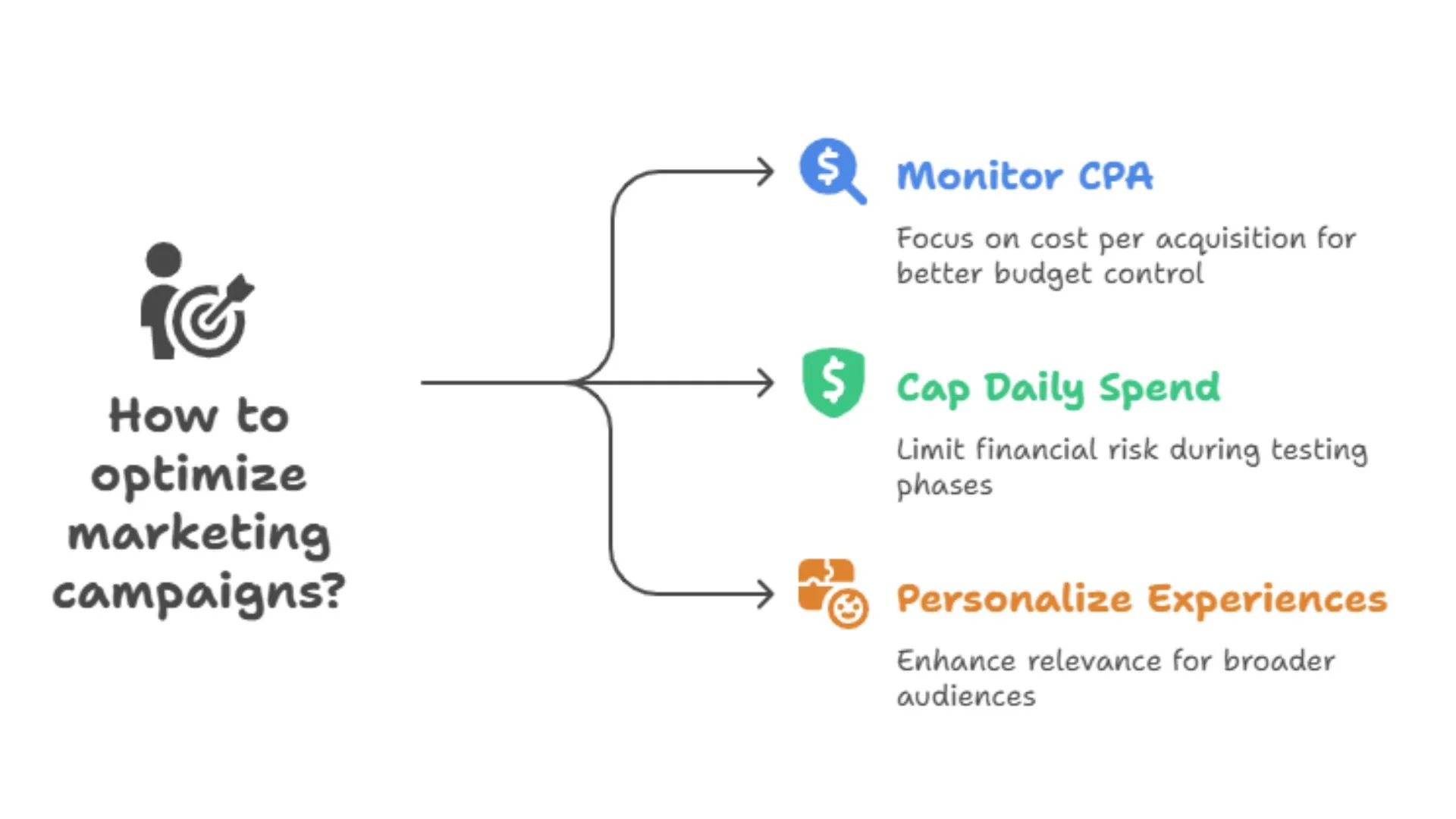You’ve probably read the same advice again and again: “Just increase budget,” “use lookalikes,” “test creatives fast.” It’s not wrong, but if you’ve actually tried scaling Meta ads (Facebook and Instagram) for a D2C brand, you know it’s not that simple.
Here’s what rarely gets said out loud: scaling Meta ads isn’t just about more money or broader targeting. It’s about understanding how Meta’s learning phase works, how your website responds, and how every click post-ad affects conversions.
Let’s get into what actually matters, and what most people won’t tell you.

Here’s the thing, when you increase your ad budget, Meta doesn’t just send more traffic. It sends more of the next best traffic. And sometimes, that means less qualified users who are less likely to convert.
So while your reach grows, your Cost Per Acquisition (CPA) might quietly rise until it no longer makes sense. Most D2C brands hit this wall somewhere between ₹30K–₹70K per day in spend. It’s not because Meta fails—it’s because your funnel isn't ready for scale.
What you can do instead:

You’ll hear endless chatter about testing hooks, thumbnails, and video lengths. And yes, they matter. But the biggest conversion killer? A landing page that doesn’t reflect the ad.
People click based on emotion. If they land on a page that feels generic or says something different, they drop off fast. This is where landing page personalization and A/B testing quietly do the heavy lifting.
How to fix this:

There’s a lot of advice out there saying “broaden your audience” to let Meta’s algorithm do its magic. But if your pixel data is weak or your product isn’t mass appeal, this can backfire.
Instead, scaling smart means stacking intent-based audiences gradually:
The backend of your website needs to support each stage of this scale, this includes your product page speed, layout, and even button placements. A/B testing those elements becomes crucial here. If you're testing what offer drives conversions in warm audiences, for example, CustomFit.ai can help compare different formats with real results.

Meta’s learning phase resets every time you make significant changes to budget, creatives, or audiences. But many brands panic and keep tweaking ads mid-phase, never letting the algorithm optimize.
What no one tells you is that scaling often fails because of human impatience, not machine error.
What to do instead:

Scaling doesn’t stop at getting users to your site, it starts there. If your site feels slow, cluttered, or confusing, you’ll lose them.
This is where tools like CustomFit.ai make a difference. It lets you test different versions of pages, headlines, images, and CTAs. You can also personalize based on where the user came from, what device they’re using, or if they’ve visited before.
Imagine this:
And that’s how brands quietly scale, by tightening the post-click journey.
A common myth: “If we don’t convert them now, we’ll get them later through retargeting.” But retargeting only works if:
And once again, where they land after that retargeting ad matters. If they land on the same exact page they bounced from last time, you’ve missed the opportunity to adapt.
This is another area where a solid A/B testing platform helps. By creating different retargeting landing pages (based on visitor history), you increase the odds of converting people who already know your brand.

User-generated content (UGC) performs well because it’s relatable and low-pressure. But many D2C brands misuse UGC by treating it as a silver bullet.
What makes UGC effective:
If you're scaling with UGC ads, test which type of content works best, before putting spend behind it. A/B test ads with quotes, videos, or testimonials across different audience segments and personalize their journeys when they land on your site.
Sometimes a campaign hits big, and the urge is to pour everything behind it. That can work, for a while. But eventually, fatigue sets in. CPMs rise. Engagement drops.
The best D2C brands scale by building systems, not just finding “winners.” They build predictable flows:
That’s what a reliable A/B testing platform like CustomFit.ai helps with: not magic solutions, but sustainable, repeatable insight.
Most guides talk about Meta’s targeting, campaign structure, or ad copy. But that’s only part of the picture. If your store isn’t ready to convert the traffic Meta sends your way, no amount of ad spend can save you.
Investing in landing page optimization, A/B testing, and personalization is what sets the great D2C brands apart. Because scaling Meta ads isn’t just about pushing more, it’s about pulling people in when they arrive.
And that starts with the experience you create.
FAQs: Scaling Meta Ads for D2C Brands
Q1: What’s the biggest mistake D2C brands make when scaling Meta ads?
Too much dependence on ad creatives and not considering what occurs post-click. The post-click experience is equally as important as the ad itself.
Q2: How does an A/B Testing Platform assist with Meta ad performance?
It enables you to experiment with landing pages, product design, copy, and offers to confirm that users who are coming from ads do indeed convert. Tools such as CustomFit.ai enable this without having to code.
Q3: Can I personalize landing pages for audiences from Meta?
Yes. With personalization platforms such as CustomFit.ai, you can segment based on referral source, device, or behavior and present more relevant content to Meta ad users.
Q4: Is retargeting still worth it in 2025?
Yes, but smart. Repetition doesn't work, relevance does. Use new content, targeted messaging, and optimized landing pages.
Q5: How often should I A/B test during a scaling phase?
Every 2–3 weeks is a good rhythm if you have the traffic. Always test one thing at a time, copy, layout, price point, to avoid confusing results.
Want Meta ad clicks to drive more consistent conversions? Begin optimizing what occurs after the click using A/B testing and personalization. CustomFit.ai makes it possible, without having to set up a complex system.
Because true growth isn't just about bringing in more visitors, it's about providing them with a reason to linger.